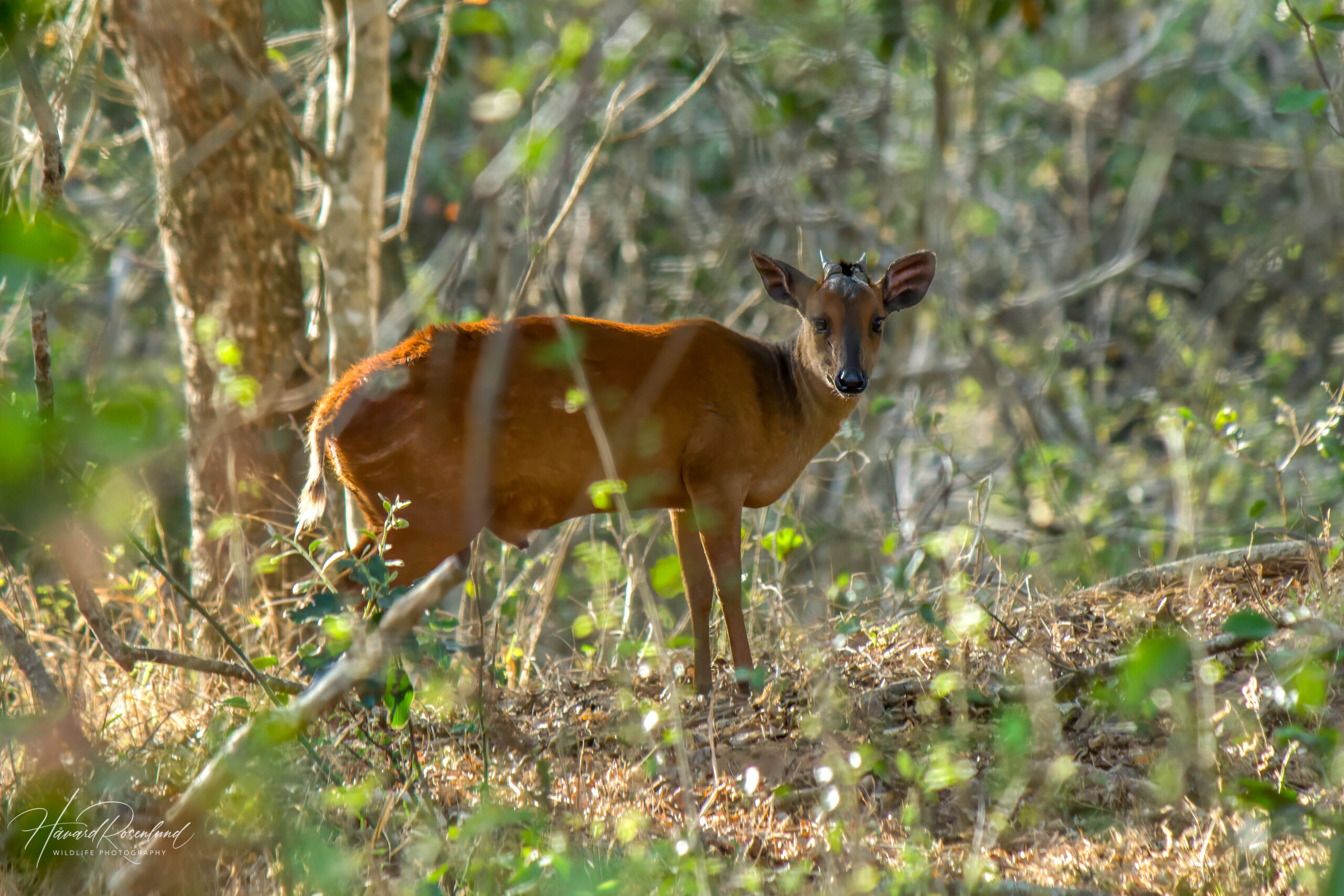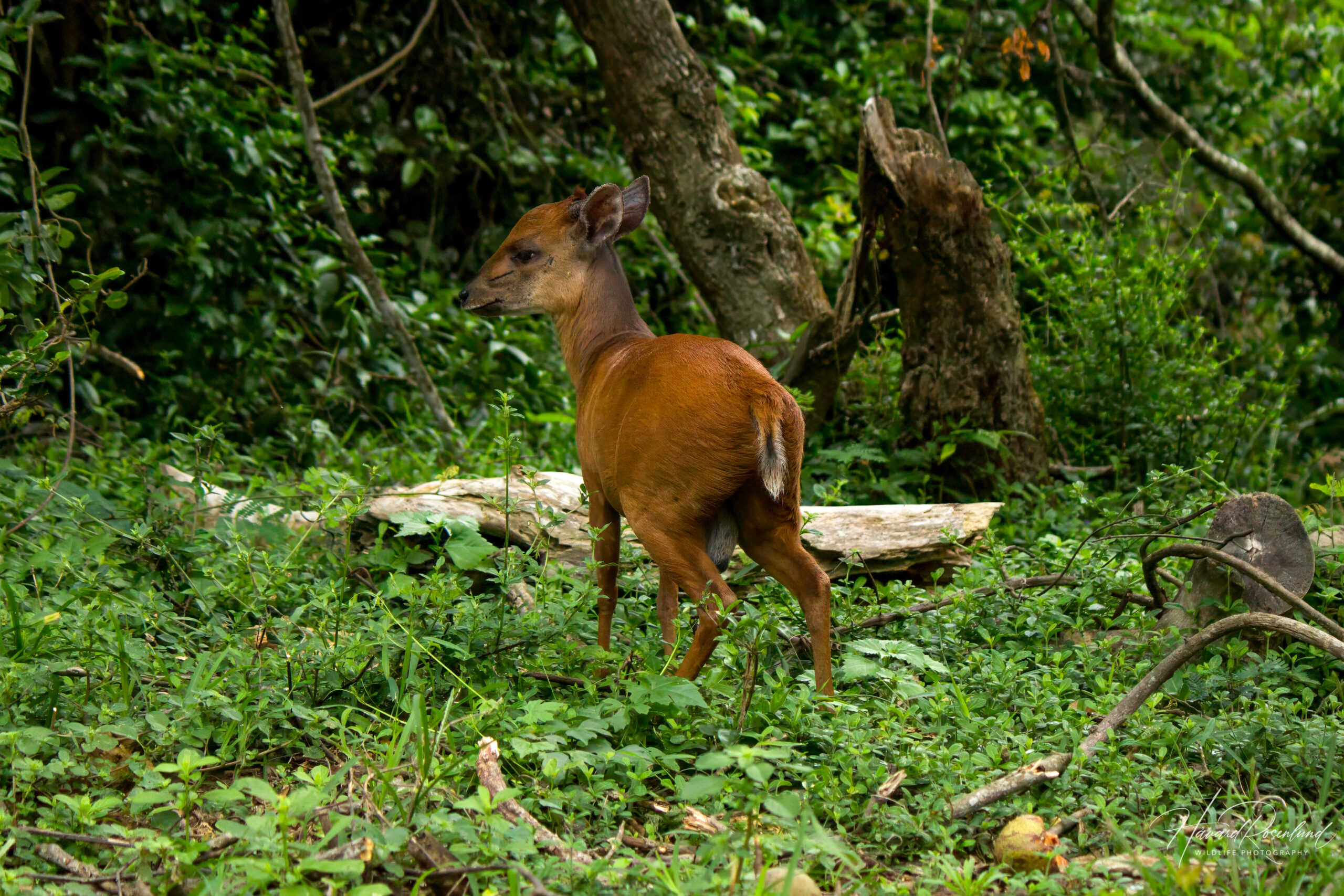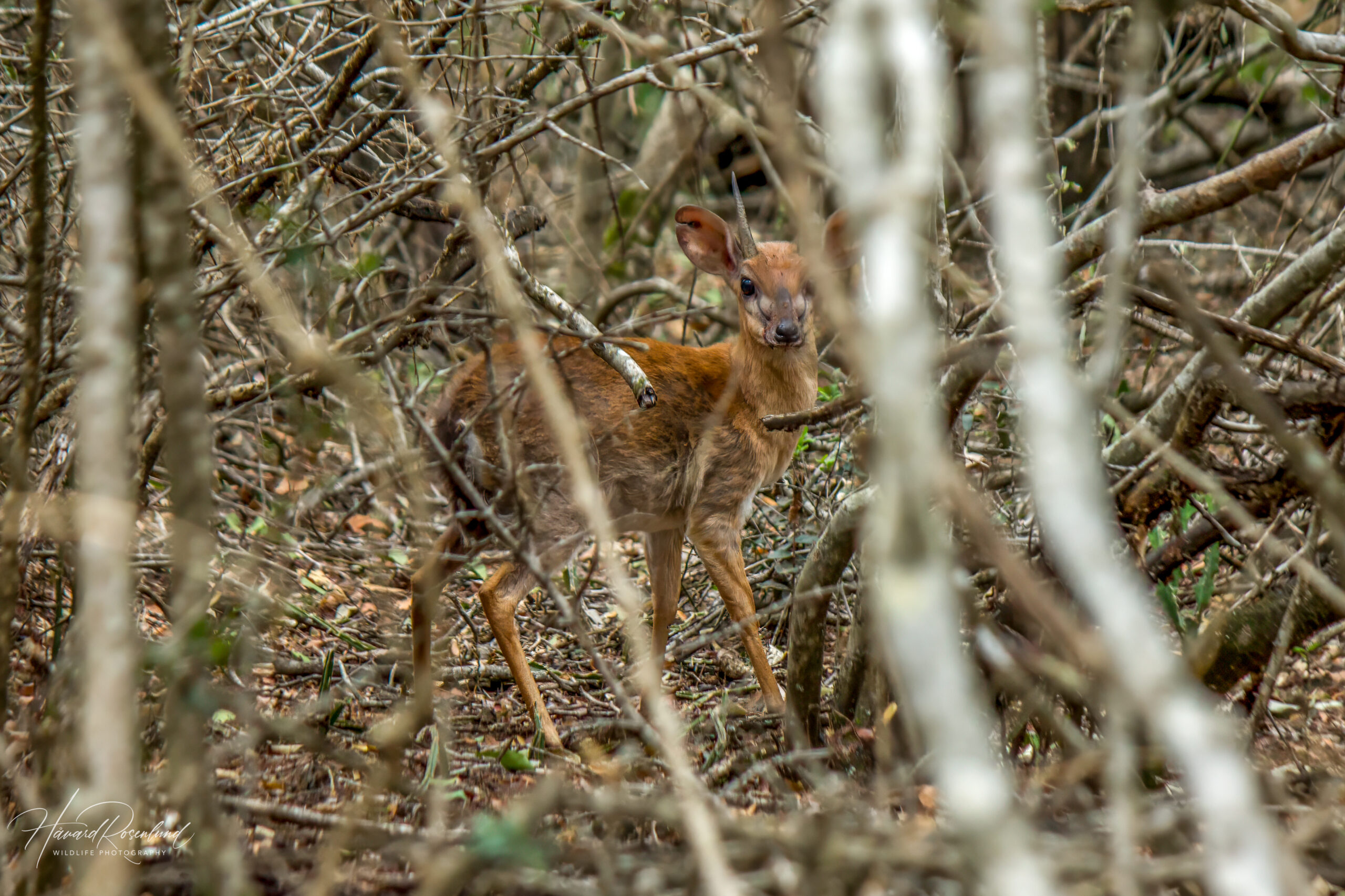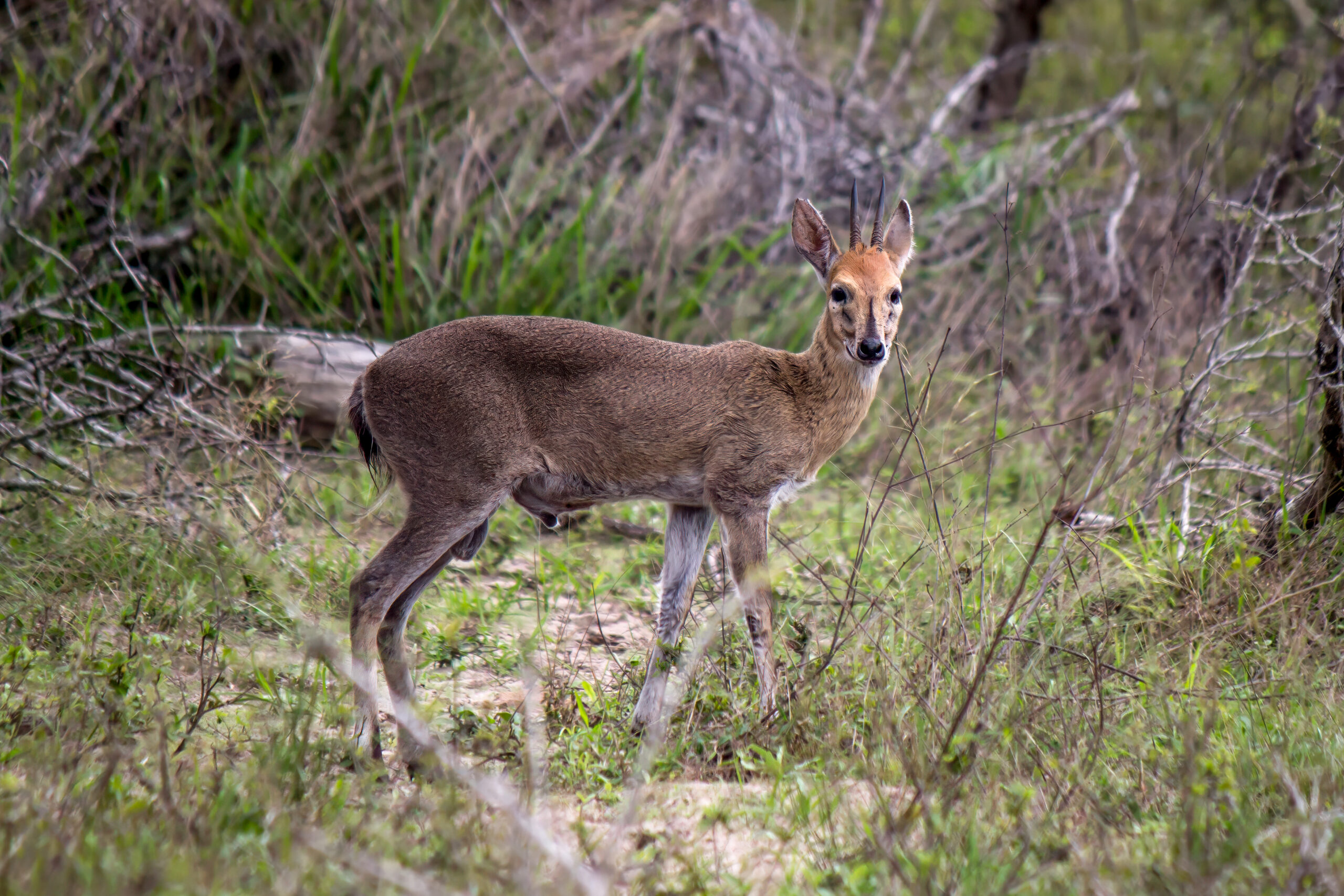Description
The Natal red duiker, or red forest duiker (Cephalophus natalensis), is a species of small antelope widespread along the east coast of Africa from Tanzania to South Africa. It has a chestnut red color and both males and females have tiny horns and a tuft of hair on top of their heads. Males grow horns twice the length of females, and female horns are often hidden in the tuft of hair and not visible. The neck turns a darker bluish grey with age. Natal red duikers only stand up to 40 cm (16 in) at the shoulder and can weigh up to 15 kg (33 lb).
Diet & habitat
Natal red duikers are often found in forested habitats and thickets where it has sufficient cover and blends in well with the forest floor. It feeds on debris fallen from trees, such as foliage, fruits, and flowers. As all duiker species, it is normally quite shy and will dive into hiding when threatened (“duiker” means “diver” in Afrikaans). Activity peaks in the morning and evening, but it can be active throughout the day. In disturbed areas they can become nocturnal. In areas where Natal red duikers are plentiful, they are often easy to spot when rummaging around on open forest floors and are less shy than its larger relative the common duiker.
Here is a video of a male Natal red duiker having a drink at a water hole in Tembe Elephant Park, South Africa. A park with a high density of the species and it is often easy to find.
Social behavior & reproduction
Natal red duikers are generally solitary animals, but pairs consisting of a male and a female do sometimes occur. Natal red duikers have home ranges but are seldom aggressive towards one another. They use their preorbital glands situated as slits on either side of the face to scent mark areas within their range, and they will rub their glands together when greeting another individual. In areas where resources are abundant, larger groups of Natal red duiker can be seen together. These groups are not necessarily social, but just a congregation of individuals sharing in the abundance. Natal red duikers might occasionally fight but it is not common. When they do, they will use their sharp horns which can inflict serious damage. Natal red duiker females give birth to a single calf after a gestation period of around 210 days.
Status
Natal red duiker is common throughout its range and are found in large numbers in many protected areas. It is under threat from hunting and trapping for bushmeat and is a popular target in Tanzanian forests. Natal red duiker is fond of coastal forests, mountain forests and dense thickets, and it is believed that some tree species are essential for red duiker presence. Because of this, forestry, agriculture, and settlement has reduced the range of red duiker, and in areas south of Durban, South Africa, it is now gone due to these threats. It still occurs in such high numbers within its range that it is listed as least concern on the IUCN Red List.












